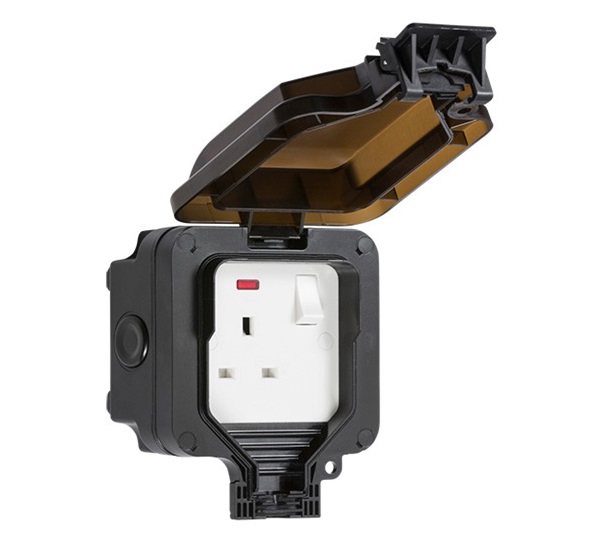Enhance Your Electrical Projects With IP66 Rated Enclosures
This rating is crucial for equipment used in harsh and challenging environments, such as industrial or outdoor settings. In this article, we will explain the meaning of IP66 and provide some examples of how it is used.
The IP66 rating is made up of two digits, with each digit representing a different level of protection. The first digit indicates the degree of protection against solid objects, such as dust or debris. The second digit indicates the level of protection against liquids, such as water or other fluids.

The first "6" in IP66 indicates that the electrical enclosure is entirely protected against the entry of dust or other small particles. This level of protection is essential for equipment that operates in environments where dust and other debris are present, as these particles can clog or damage sensitive components.
The second "6" in IP66 indicates that the enclosure can withstand powerful jets of water from any direction, meaning that it can withstand heavy rain or even direct jets of water. This level of protection is crucial for outdoor applications or environments where the equipment may be exposed to water or other liquids.
Overall, an IP66-rated enclosure provides a high level of protection against environmental factors, making it suitable for use in harsh and challenging environments. The rating ensures that equipment remains safe and operational, even in situations where water, dust, or other solids could pose a risk.

Examples of IP66 Applications
IP66 is commonly used in a variety of applications where equipment is exposed to harsh environments. Some examples of IP66 applications include:
- Outdoor lighting fixtures: Lighting fixtures installed in outdoor environments, such as parking lots, sports fields, or streetlights, require IP66-rated enclosures to protect against dust and water.
- Electrical enclosures: Electrical enclosures used in industrial environments, such as factories or manufacturing plants, require IP66-rated enclosures to protect against dust and water.
- Marine equipment: Equipment used on boats or other watercraft must be able to withstand exposure to water, making IP66-rated enclosures ideal for marine applications.
- Transportation equipment: Vehicles used in harsh environments, such as construction or mining equipment, require IP66-rated enclosures to protect against dust and water.
- Data centers: Data centers require IP66-rated enclosures to protect servers and other sensitive equipment from dust and water.
IP66 is a relatively high level of protection and is commonly used for electrical enclosures in outdoor and industrial applications where equipment is exposed to harsh environments. Enclosures with this rating can protect equipment from dust, water, and other environmental factors that could potentially damage or disrupt their operation.
Overall, IP66 is a crucial rating system for equipment used in harsh environments. The rating ensures that equipment remains safe and operational, even in situations where dust, water, or other environmental factors could pose a risk. By selecting IP66-rated enclosures for equipment, manufacturers can help ensure the safety and reliability of their products in challenging environments.
You should read it
- How to fix home load in PlayerUnknown's Battlegrounds
- Apple users are careful with the kind of malware that is virtually undetectable on a Mac
- 15 mistakes that trainees often make
- Automatically convert Important email to Normal in Microsoft Outlook 2010
- How to use Photoshop CS5 - Part 22: Introducing the Fill Content Aware feature
- How to locate a Samsung phone when lost
- The new MacBook Air will use super fast WiFi
- Running Linux on Windows 10 does not require a virtual machine, here are 18 things you should know
- Set up Ad Hoc wireless network to play WiFi without software from your laptop
- AMD introduces 3rd Generation Threadripper CPU, the world's most powerful computer CPU
- How to Hide Rows on Google Sheets on PC or Mac
- The leading zero format in Excel number ranges is easy
May be interested

Key differences between hardware VPN and software VPN

Windows 365 Apps Officially Launched for Windows 10 and 11

What does the red 'X' on Windows folders mean?

Chocolatey or Windows Package Manager is the better tool to download Windows software?

Microsoft Defender may soon be automatically installed on all Windows PCs

What is System Cooling Policy on Windows? How to set up?






 How to use household electrical equipment safely and explosion-proof
How to use household electrical equipment safely and explosion-proof How to enhance photos with Samsung's AI-powered Galaxy Enhance-X app
How to enhance photos with Samsung's AI-powered Galaxy Enhance-X app How to Connect Electrical Wiring
How to Connect Electrical Wiring How to Crimp a Wire
How to Crimp a Wire Scientists have found a way to 'characterize' directly on the human brain with electrical stimulation
Scientists have found a way to 'characterize' directly on the human brain with electrical stimulation What is a breadboard and how does it work?
What is a breadboard and how does it work?